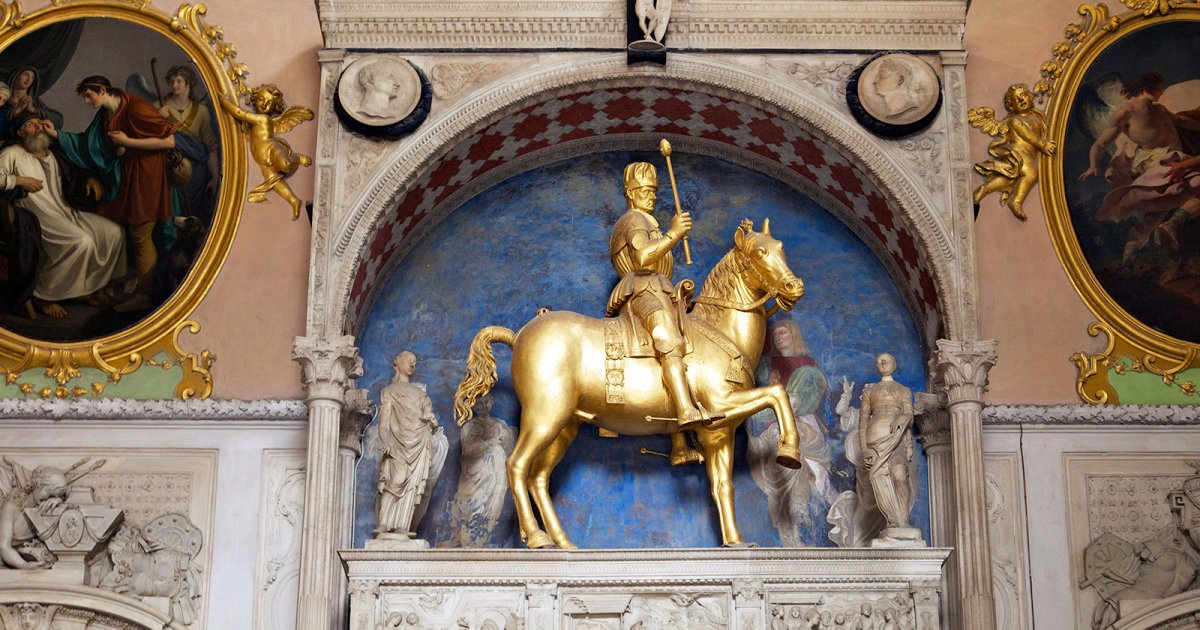COLLEONI CHAPEL, Interior
 Language: English / USA
Language: English / USA
Inside the Chapel, you’ll easily recognize Bartolomeo Colleoni: he’s the horseman in gilded wood, in parade dress, with a large hat and the baton of command. The equestrian statue occupies a place of honor, high up in the center of the funeral monument, composed of two tombs placed one on top of the other.
Once again, the desire to celebrate Colleoni’s endeavors overshadows religious sentiment: the light that shines in from the rose window illuminates the statue, while the altar of the chapel is confined in a darker spot on the right. Colleoni was laid to rest in the larger, lower tomb, while the one on top contains the remains of his wife, Tisbe. The sculptures that adorn them are masterpieces by Giovanni Antonio Amadeo.
In one of the relief panels depicting Stories of Christ, and more specifically the Flagellation, Bartolomeo Colleoni can be seen again, sitting on a helmet and holding a torch in his hand.
On the wall on the left, you can also see another tomb, more modest, but crafted in an extremely delicate style. The marble drapes are drawn to show a lovely young woman, tenderly set down to rest for eternity: this is Medea, Colleoni’s natural daughter, who died at 15 years of age and is portrayed by Amadeo with exquisite sensitivity.
The frescoes at the base of the cupola are by the famous Venetian painter Giambattista Tiepolo, one of the greatest artists of his time. They were painted in the 18th century, when further work was carried out on the Chapel. The Renaissance structure was replaced by the light, bright colors of the Rococo style that transformed the interior into a multitude of shapes and lights. Here, even the most dramatic episodes, such as the Beheading of John the Baptist, take on a theatrical quality: just look at the entertaining little dog trying to attract the attention of a distracted Salome.
The celebration of the Captain’s life continues with the painting entitled Giosuè che ferma il Sole (Joshua stopping the sun) by the painter Crespi from Bologna, which hints at the almost supernatural military virtues of Colleoni, comparing him to the legendary biblical leader.
An interesting fact: despite numerous searches, the remains of Colleoni had never been found in the chapel, until they were discovered during an exploration in 1969. You know where? Exactly where they were supposed to be – in the lower tomb, craftily hidden by a false bottom.
Our visit to the Colleoni Chapel ends here: MyWoWo would like to thank you – see you again at another Wonder of the World!



